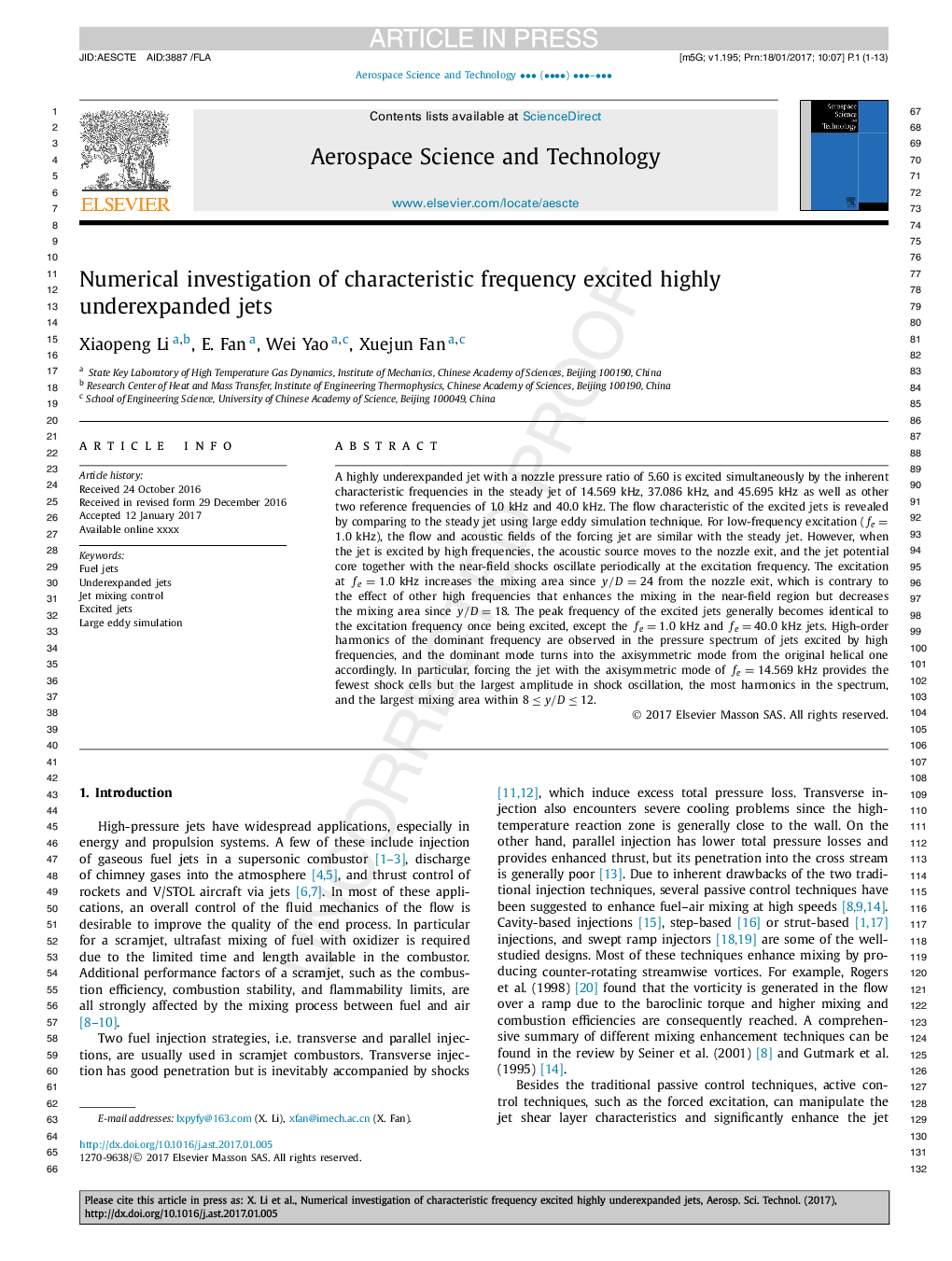| Article ID | Journal | Published Year | Pages | File Type |
|---|---|---|---|---|
| 5473052 | Aerospace Science and Technology | 2017 | 13 Pages |
Abstract
A highly underexpanded jet with a nozzle pressure ratio of 5.60 is excited simultaneously by the inherent characteristic frequencies in the steady jet of 14.569 kHz, 37.086 kHz, and 45.695 kHz as well as other two reference frequencies of 1.0 kHz and 40.0 kHz. The flow characteristic of the excited jets is revealed by comparing to the steady jet using large eddy simulation technique. For low-frequency excitation (fe=1.0 kHz), the flow and acoustic fields of the forcing jet are similar with the steady jet. However, when the jet is excited by high frequencies, the acoustic source moves to the nozzle exit, and the jet potential core together with the near-field shocks oscillate periodically at the excitation frequency. The excitation at fe=1.0 kHz increases the mixing area since y/D=24 from the nozzle exit, which is contrary to the effect of other high frequencies that enhances the mixing in the near-field region but decreases the mixing area since y/D=18. The peak frequency of the excited jets generally becomes identical to the excitation frequency once being excited, except the fe=1.0 kHz and fe=40.0 kHz jets. High-order harmonics of the dominant frequency are observed in the pressure spectrum of jets excited by high frequencies, and the dominant mode turns into the axisymmetric mode from the original helical one accordingly. In particular, forcing the jet with the axisymmetric mode of fe=14.569 kHz provides the fewest shock cells but the largest amplitude in shock oscillation, the most harmonics in the spectrum, and the largest mixing area within 8â¤y/Dâ¤12.
Related Topics
Physical Sciences and Engineering
Engineering
Aerospace Engineering
Authors
Xiaopeng Li, E. Fan, Wei Yao, Xuejun Fan,
